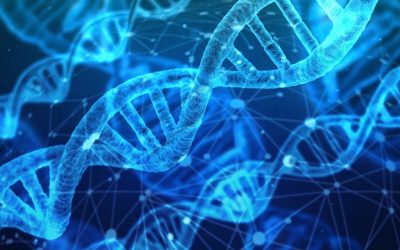Abstract Alzheimer's disease (AD) is considered as the most common cause of dementia in elderly population. While the exact mechanism of AD has not been discovered, hyperbolic [hyperbaric] oxygen therapy (HBOT) has been proven to be effective in the treatment of this...
Key Alzheimer’s Disease
Hyperbaric Oxygen Therapy (HBOT) Research for Alzheimer’s Disease.
Nicotinamide riboside restores cognition through an upregulation of proliferator-activated receptor-γ coactivator 1α regulated β-secretase 1 degradation and mitochondrial gene expression in Alzheimer’s mouse models
Abstract Nicotinamide adenine dinucleotide (NAD)(+), a coenzyme involved in redox activities in the mitochondrial electron transport chain, has been identified as a key regulator of the lifespan-extending effects, and the activation of NAD(+) expression has been...
NAD+ biosynthesis, aging, and disease
Abstract Nicotinamide adenine dinucleotide (NAD+) biosynthesis and its regulation have recently been attracting markedly increasing interest. Aging is marked by a systemic decrease in NAD+ across multiple tissues. The dysfunction of NAD+ biosynthesis plays a critical...
Hyperbaric oxygen therapy ameliorates pathophysiology of 3xTg-AD mouse model by attenuating neuroinflammation.
There is a real need for new interventions for Alzheimer’s disease (AD). Hyperbaric oxygen therapy (HBOT), the medical administration of 100% oxygen at conditions greater than 1 atmosphere absolute, has been used successfully to treat several neurological conditions, but its effects on AD pathology have never been thoroughly examined. Therefore, we exposed old triple-transgenic (3xTg) and non-transgenic mice to HBOT followed by behavioral, histological, and biochemical analyses. HBOT attenuated neuroinflammatory processes by reducing astrogliosis, microgliosis, and the secretion of proinflammatory cytokines (IL-1β and TNFα) and increasing expression of scavenger receptor A, arginase1, and antiinflammatory cytokines (IL-4 and IL-10). Moreover, HBOT reduced hypoxia, amyloid burden, and tau phosphorylation in 3xTg mice and ameliorated their behavioral deficits. Therefore, we suggest that HBOT has multifaceted effects that reduce AD pathologies, even in old mice. Given that HBOT is used in the clinic to treat various indications, including neurological conditions, these results suggest HBOT as a novel therapeutic intervention for AD.
NAD + supplementation normalizes key Alzheimer’s features and DNA damage responses in a new AD mouse model with introduced DNA repair deficiency
Abstract Emerging findings suggest that compromised cellular bioenergetics and DNA repair contribute to the pathogenesis of Alzheimer's disease (AD), but their role in disease-defining pathology is unclear. We developed a DNA repair-deficient...
Regional Cerebral Blood Flow in Mild Cognitive Impairment and Alzheimer’s Disease Measured with Arterial Spin Labeling Magnetic Resonance Imaging
Abstract Alzheimer's disease (AD) depicts dynamic changes in regional brain function from early stages of the disease. Arterial spin labeling- (ASL-) based MRI methods have been applied for detecting regional cerebral blood flow (rCBF) perfusion changes in patients...
The amyloid hypothesis of Alzheimer’s disease at 25 years
Abstract Despite continuing debate about the amyloid β-protein (or Aβ hypothesis, new lines of evidence from laboratories and clinics worldwide support the concept that an imbalance between production and clearance of Aβ42 and related Aβ peptides...
Adverse Effects of Cholinesterase Inhibitors in Dementia, According to the Pharmacovigilance Databases of the United-States and Canada
Abstract This survey analyzes two national pharmacovigilance databases in order to determine the major adverse reactions observed with the use of cholinesterase inhibitors in dementia. We conducted a statistical analysis of the Food and Drug Administration Adverse...
Brain glutathione levels–a novel biomarker for mild cognitive impairment and Alzheimer’s disease
Abstract Background: Extant data from in vivo animal models and postmortem studies indicate that Alzheimer's disease (AD) pathology is associated with reduction of the brain antioxidant glutathione (GSH), yet direct clinical evidence has been lacking. In this...









